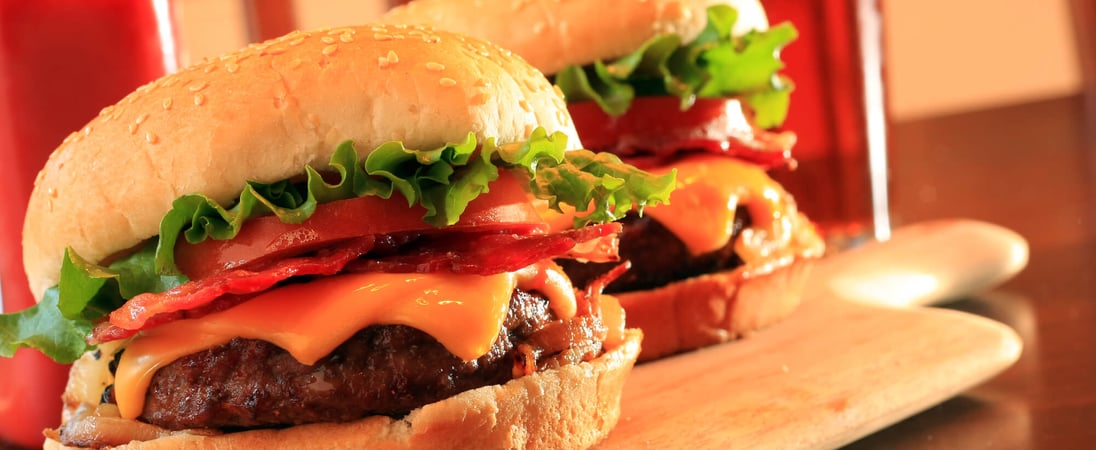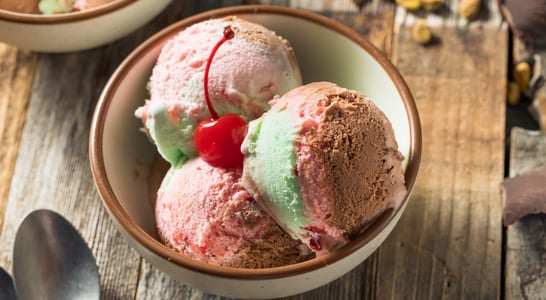
Burger Day
A juicy, flavorful patty nestled between soft, toasted buns, adorned with melted cheese, crispy bacon, and a tangy sauce.
At the base level, a burger is a piece of meat and a bun with something on it. It’s simple but it seems to make a lot of people happy.
Danny Meyer
Burgers are indeed a source of true happiness, a fact supported by the rich cheesy topping, crisp flavorful onion, and splash of tomato that brings it all together with a tangy pickle finish.
Or maybe for a bolder person, enjoying their burger topped with onion rings and barbecue sauce in a true Western-style and a splash of blue cheese is where it’s at. Whatever the case, it’s hard to argue that the burger isn’t the perfect food, and Burger Day is here to celebrate it in all its glory.
How To Celebrate Burger Day
Celebrating Burger Day is one of the easiest, most entertaining, and absolutely delicious celebrations imaginable. All there is to do is eat burgers. Yep, it’s that simple! Enjoy a nice juicy burger as many times as desired, in as many different configurations.
Consider some of these other ways to enjoy Burger Day:
Host a Burger Day Cookout
Perhaps consider hosting a great big burger cookout at home or at friend;s, where everyone makes their favorite variety with their favorite toppings and introduces it to the group. It might just be possible to meet a new favorite type of burger, and that’s what Burger Day is all about!
Get Gourmet on Burger Day
Interestingly, though, it isn’t necessary to limit things to the traditional burger from fast foot joints on Burger Day. Over the last few years, there has been an inexorable rise of the gourmet burger – a burger that combines the traditional patty with premium ingredients.
Premium burgers are usually based on popular food themes from around the world.
So, for instance, it is possible to enjoy a burger that makes liberal use of avocado, lime, and chili or one that uses flavors like peanut and lemongrass. Spend Burger Day on a culinary adventure!
Try Different Types of Burgers
Another thing to do is celebrate the fact that the humble burger’s definition is now vastly expanded. While beef patties are classic, they’re no longer the only game in town.
Today, there are a host of options, including chicken burgers, turkey burgers, fake meat burgers, and even portabella mushroom burgers if you eat veggie.
The more invested folks might also want to come up with new recipes and share them in blog posts on social media. The world is crying out for fun, new burger recipes that people can enjoy after a busy day. Share a burger to spread the love and celebrate this marvelous day!
History Of Burger Day
Burger Day was established by Mr. Hyde, a lifestyle content email in the UK, to celebrate their favorite food and all the places they’ve sampled that make them.
It’s a great system, free from any of the false advertising experienced elsewhere. As they say, “If we say we like a burger place, it’s because we ate there and liked it.”
Burger Day was established to vaunt the glories of this most perfect of meals, technically a sandwich, really a whole meal. The day got its started in 2013 and has been an exciting annual event ever since.
And as for the history of the burger? Well, that’s a bit more complicated.
There is an on-running debate over who actually invented the burger. Some believe that it was invented in Hamburg, Germany, or to be more precise, the meat that would become the hamburger was. Ground beef used to be considered a waste product, the leftovers of the prime cuts that were then sold off on the cheap.
These days premium ground beef is the foundation of one of the world’s most popular foods. It got its start as a hamburger steak, a popular dish served with multiple variations, but one day it found its way onto a bun, met cheese and bacon, and has never looked back.
Burger Day is your opportunity (excuse?) to indulge in as many of these delicious concoctions as you desire!
However, other people assert that the hamburger originated with Louis Lassen, a Danish immigrant who cooked up the first patty in 1900 in New Haven, using ideas he’d picked up in Europe.
The hamburger made its official debut at the 1904 St. Louis food festival, but it didn’t really take off properly until mass commercialization of the concept in the following decades. Hamburgers weren’t originally a delectable, trendy fast-food item.
Instead, they grew out of economic necessity. Innovators in the food industry needed a way to use off-cuts of meat productively, instead of just throwing them to the dogs. They wanted a tasty meal that they could sell quickly to prevent spoilage. So the humble burger seemed like the obvious choice.
During the Great Depression of the 1930s, the need for cheap food reached even greater heights. Seeing hunger and poverty, entrepreneurs looked for ways to get tasty food into people’s bellies without the usual price tag. So they began developing machines that would churn out burgers en masse.
Soon the price of patties fell even further, but there was a problem: people didn’t have anywhere to go and eat them.
Fortunately, the development of the hamburger coincided with the emergence of the “greasy spoon.” Innovative restaurateurs realized that they could draw in punters by providing public access to new radio services springing up all around the country. Burgers were an obvious, cheap, and delicious menu choice.
Whatever the truth about their origins, hamburgers are one of the most popular foods in the world and a dietary staple. Juicy Foods in Oregon made the biggest burger in history. It weighed in at 777 lbs and cost the company more than $5,000 to make.
Burger Day FAQs
Why are hamburgers often linked to state fairs and festivals?
State fairs played a major role in the hamburger’s rise. Early innovators like Charlie Nagreen sold them as portable meals at fairs in the late 1800s.
The casual, hand-held nature made burgers a hit with fairgoers, setting the stage for their popularity. Even today, fairs feature creative burger variations, celebrating this fairground favorite.
Are there ancient dishes similar to the hamburger?
Yes, minced and shaped meat dishes date back centuries. Ancient Roman cookbooks describe patties made from ground meat and spices.
In the 13th century, Mongol horsemen carried minced beef under their saddles, tenderizing the meat. These historical dishes likely influenced what we now call the hamburger.
How is Burger Day celebrated in Japan?
In Japan, Burger Day often highlights gourmet twists. Wagyu beef burgers, topped with truffle oil or gold leaf, attract foodies.
Fast-food chains also introduce limited-edition offerings. Burger Day has become a mix of indulgence and creativity, blending Japanese precision with Western influences.
What role did World War II play in popularizing hamburgers?
During World War II, hamburgers became a symbol of American identity.
They were inexpensive, easy to prepare, and widely consumed. Military mess halls served them to troops, who later sought them out back home. Post-war prosperity and diners fueled the burger’s mainstream appeal.
Are there burgers without buns?
Yes, bun-less burgers have gained fame globally. In Sweden, “plankstek” serves a patty on a wooden board with mashed potatoes. In Korea, “lettuce wraps” replace buns with fresh lettuce, making a healthier burger.
These variations showcase the burger’s versatility.
What’s the science behind the burger’s appeal?
The Maillard reaction is key. When a burger patty cooks, it creates a complex mix of flavors through this chemical reaction.
This, combined with umami-rich toppings like cheese or ketchup, triggers pleasure centers in the brain. It’s a delicious blend of chemistry and culinary art.
What are some bizarre burger-themed traditions?
In Australia, some Burger Day celebrations include burger-eating contests where participants devour enormous stacks.
In the U.S., quirky events like “burger tosses” combine sport with burger fun. These playful traditions add a touch of humor to the day.
Why do plant-based burgers often mimic beef so closely?
Plant-based brands like Impossible and Beyond aim to satisfy meat lovers transitioning to vegan diets.
They replicate beef’s flavor with heme, a compound found in plants and meat. By mimicking the experience, they appeal to a wider audience beyond vegetarians.
How do burgers feature in pop culture?
Burgers symbolize Americana, appearing in countless movies, ads, and shows.
Think of Bob’s Burgers or the famous Royale with Cheese conversation in Pulp Fiction. They’re more than food—they’re icons of culture and storytelling.
What’s the story behind burger-shaped merchandise?
Burger-themed items, like pillows and keychains, became popular in the 1980s.
Fast-food chains fueled this trend with collectible toys. Today, everything from burger costumes to phone cases keeps the trend alive, blending nostalgia with fun.
Need some inspiration?
Check out these videos for some extra inspiration in getting involved!
Also on ...
View all holidaysPoet’s Day
Connect with your inner poet by writing some poetry yourself, or read the beautiful words of poets of all eras, from the Ancient Greeks to contemporary poets.
National Spumoni Day
Enjoy some Spumoni, a layered Italian ice cream with cream, fruit, and nuts. For the authentic experience, don’t use a spoon; you have to slice it.




